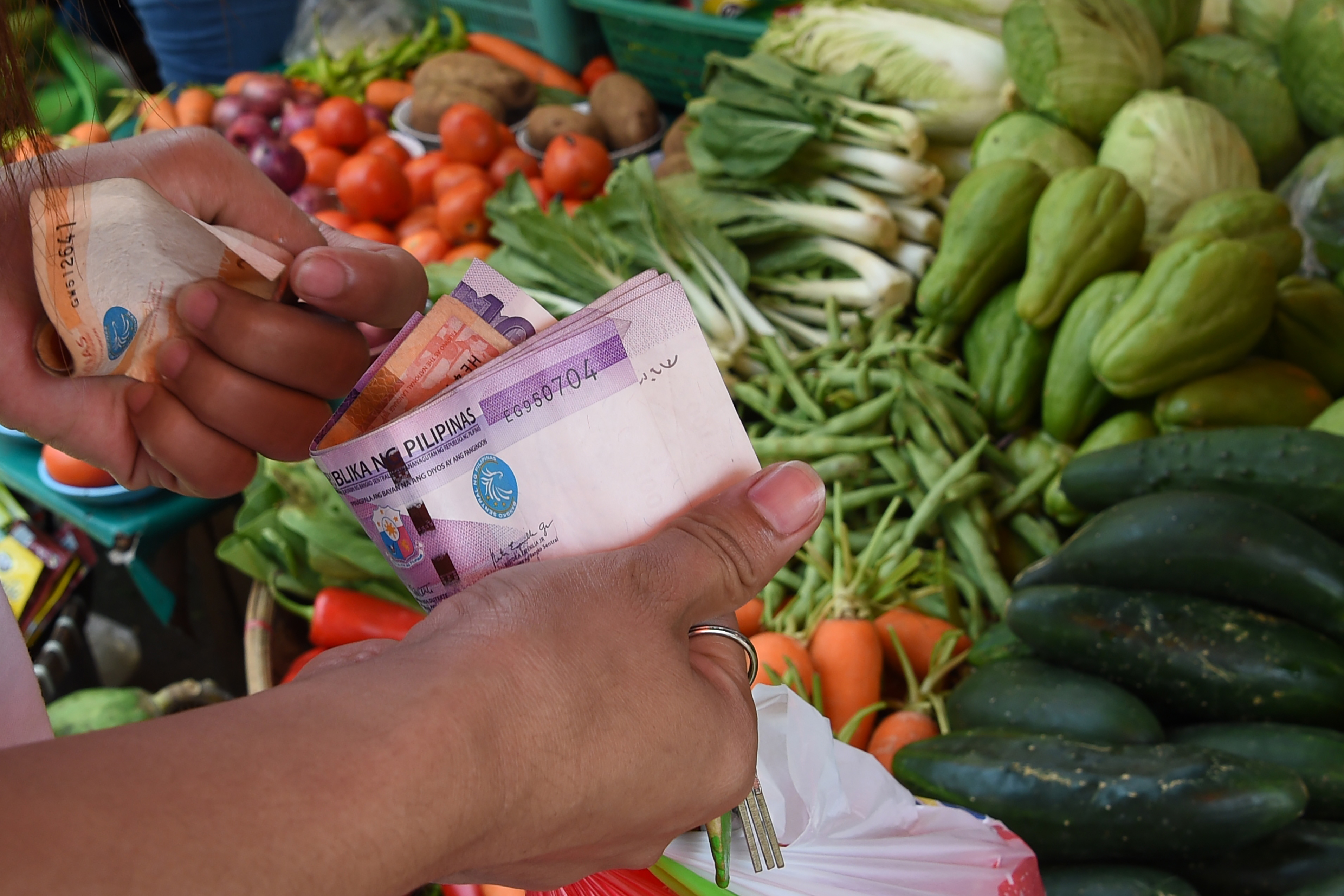
A customer buys vegetables at a market in Manila on October 5, 2018. – Philippine inflation has risen for a ninth straight month in September, to a near-10-year high, the government said October 5, in an unexpected challenge for President Rodrigo Duterte. (Photo by TED ALJIBE / AFP)
The central bank expects inflationary pressures to have moderated slightly in October due to the decrease in the prices of rice and other food items as well as the cost of electricity — a possible indication that the uptrend in the consumer price index since the start of the year may have finally been broken.
In a statement, the Department of Economic Research of the Bangko Sentral ng Pilipinas (BSP) said it expects the inflation rate for the month that just passed to settle within the 6.2-7 percent range.
“This corresponds to a month-on-month inflation forecast range of -0.2 to 0.6 percent, which is in line with the BSP’s assessment that inflation is likely to have peaked in the third quarter of 2018 in the absence of further price shocks,” the economists said.
The country’s inflation rate currently stands at a nine-year high of 6.7 percent recorded in September. But economic managers and economists are optimistic that moderating rice and petroleum prices — along with an aggressive interest rate hiking streak by the central bank —the may have finally made a dent on surging consumer prices.
The BSP said that upward price pressures from domestic petroleum prices and water rates in Manila Water and Maynilad-serviced areas could be offset by the lower prices of rice and other food items as well as the downward adjustment in Meralco power rates.
Last September, the same BSP unit predicted — with a higher degree of accuracy compared to previous periods — that the inflation rate for that month would settle at around 6.8 percent, with a range of 6.3–7.1 percent, due to higher domestic petroleum prices, higher prices of rice and other agricultural commodities due to typhoon “Ompong” (international name: Mangkhut), and the peso’s depreciation.
“Moving forward, the BSP will continue to closely monitor evolving trends in prices and inflation expectations, and will undertake necessary measures towards its commitment to price stability,” the economists said.
The group’s views jibe with those of other analysts who expect the worst of the country’s inflation crisis to have already passed during the third quarter.
Recently, ING Bank senior economist Nicholas Mapa said that recent declines in food prices together with lower utility rates and pump prices bode well for the Philippines’ inflation outlook, and predicted that the rise in the October consumer price index would be capped at only 6.5 percent.
“Government officials have sounded off recently on the increasing likelihood that domestic inflation had indeed peaked in [the third quarter], pointing to recently implemented non-monetary and monetary measures that have begun to take root,” he said.
The central bank has, so far, raised local interest rates by a total of 150 basis points in four successive adjustments since May, after initially predicting that price hikes would abate by the fourth quarter of 2018 or early 2019, at the latest, without need for any policy intervention. /kga

